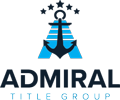Each lender is different, so be sure to choose one that will work with you and your specific circumstances. Shop for lenders offering the best deals. Check with several mortgage companies and use one or more reporting services. If there isn’t a reporting service covering your area, begin the search at your own bank or savings and loan or through any of the following sources:
Independent Mortgage Companies:
Make just over half of all home mortgages, including most VA-guaranteed and FHA-insured loans.
Savings Institutions:
Savings and loan associations and savings banks originate close to a quarter of home mortgages. Most are conventional loans – those not guaranteed by the VA or FmHA, or insured by the FHA.
Commercial Banks:
Active in residential lending. Banks also are a major supplier of loans for mobile-home buyers.
Mortgage Brokers:
Act as intermediaries. A broker keeps tabs on the mortgage market through ties to local, regional and national lenders, and can refer a prospective borrower to a mortgage banker, savings institution or a commercial bank. Brokers don’t lend money and can’t approve loans.
Credit Unions:
Make close to one-third of all first-mortgage loans, but you must be a member.
Public Agencies:
State and local finance agencies make below-market-rate financing available to eligible low- and moderate-income first-time buyers through the sale of tax-exempt bonds.
Employers and Unions:
Don’t overlook your employer as a source of assistance. An employer may subsidize the interest or even act as a lender. Unions are another possibility. The AFL-CIO offers what it calls “Union Privilege.” Unions that sign on can make first-time home loans available to eligible members for as little as three percent down.
Choosing the Right Mortgage
The next step in your journey is choosing the right type of mortgage for your individual financial needs. While there are some people who can and do pay cash for a new home, most are like you, and this is where your lender’s skills and knowledge will take effect.
Pre-qualifying before house hunting puts you ahead of the game. Your research into how much home you can afford has provided you with the knowledge of already knowing the standard of mortgages for which you qualify. Quite simply, you are shopping for a loan from a mortgage lender.
First, review the major kinds of mortgages you may encounter. The following list contains the mortgages you are most likely to see. Again, ask questions; your lender will be happy to explain each type of loan arrangement and satisfy all your concerns.
Fixed-Rate Mortgage (FRM)
This is the standard mortgage model. It is the oldest and most easily understood the type of mortgage. Its primary attraction is that the interest rate and the amount of payment remain fixed for the life of the loan, typically either 15 or 30 years. However, if rates fall, the holder cannot benefit from the new, lower rate except by refinancing.
Adjustable-Rate Mortgage (ARM)
With this kind of mortgage, the interest rate you pay rises and falls along with other rates charged throughout the economy. Therefore, you, the borrower, assume the risk of rising rates, and you stand to benefit should rates fall. An essential question to ask about an ARM is whether there are limits on how much your rate can be raised, both at each review and over the whole term of the loan. Without limits, known as “caps,” you’ll have no way to predict how much your rate (and thus your monthly payments) might change.
Convertible Option
FRM and ARM represent the primary options available to homebuyers today. The convertible mortgage represents something of a compromise between the two. It is designed for those who want the advantages of the ARM, but also want to limit the risk of rising rates.Under this arrangement, the buyer starts out with an ARM, but has the option of converting to an FRM at specified points during the loan term. You may want to ask the lender these questions: When can you convert? How often can you consider the option? Are there any up-front fees involved? Will you have to pay more for an ARM with the conversion feature than for an ARM without it? Are there additional fees due if and when you decide to convert? Find out the lender’s conversion rate. Graduated Payment Mortgage (GPM)A fixed-rate GPM starts out with low payments, usually below that of a fixed-rate and possibly that of an ARM, but rise gradually (usually over five to ten years), then level off for the remaining years of the loan.
Growing-Equity Mortgage (GEM)
This option is designed for borrowers who want to pay off their mortgage as soon as possible. Therefore, the interest rate remains fixed, but the amount of the monthly payment increases according to a prearranged schedule, with the higher payments going to reduce the principal balance. This mortgage can be appealing to someone who is expecting regular income growth and wants to build equity quickly.
Fifteen-Year Mortgage
Like the GEM, the fifteen-year mortgage enables borrowers to repay their loan more quickly, which means they build equity faster and pay less interest over the life of the mortgage.
Biweekly Mortgage
Another option for people who want to repay their loans sooner is the biweekly mortgage. Instead of making a single mortgage payment each month, borrowers who choose this option make two equal payments monthly
Federal Housing Administration Insured Loans (FHA)
FHA, also known as the Federal Housing Administration, operates under the control of the Department of Housing and Urban Development (HUD) and has the primary responsibility for administering the government home loan insurance program. This program allows buyers who might otherwise not qualify for a home loan to obtain one because the risk is removed from the lender by FHA.

Leave A Comment